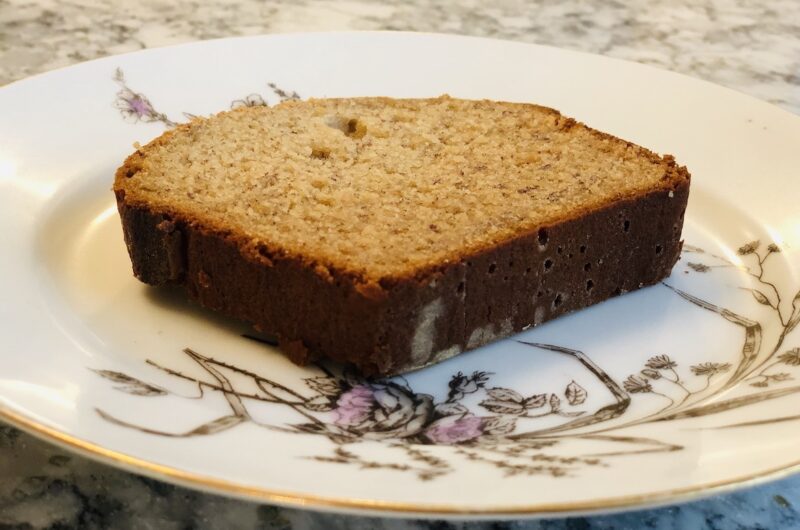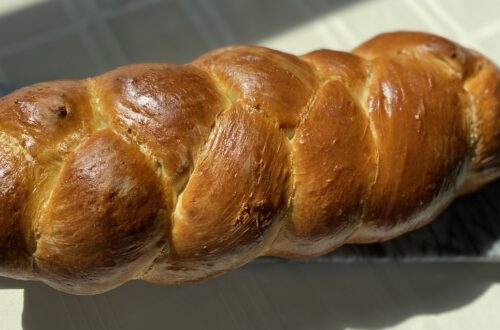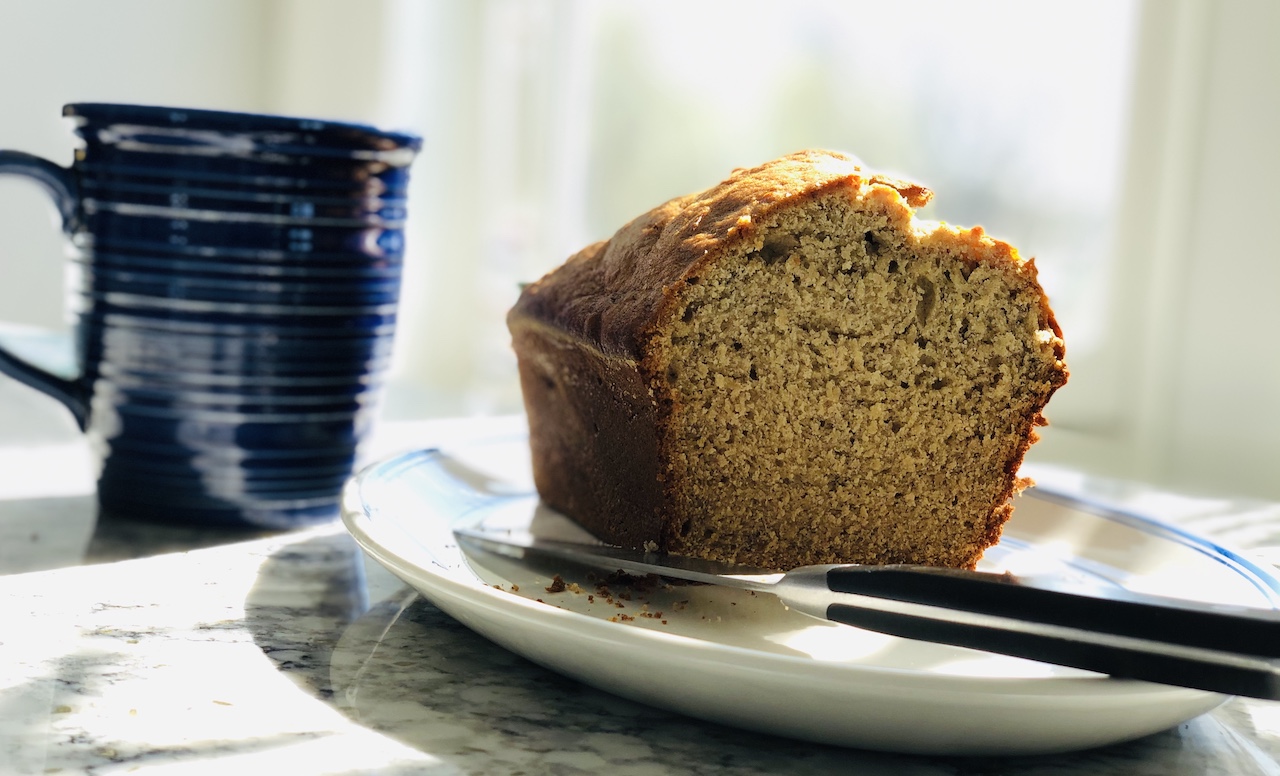
Banana Bread
When I first moved to Berlin in 2011, a fellow American who lived down the hall gave me this recipe. Although that was almost a decade ago, it has remained my go-to banana bread. It’s what I made when I felt homesick in those first couple of years in Berlin and what I made to give my German friends a taste of “American” baking in my later years in the city. (My friends can attest to the number of times I showed up at parties – and soccer practice – with this very banana bread). It’s what I tried (and failed) to bake when I had a terrible day in law school during 1L and it’s what I still make when I need a quick and easy dessert for something.
But bananas, oh no. I love bananas and could eat them every day. And I’m not alone; bananas are Americans’ favorite fruit. Unfortunately, bananas have a deep and ugly history. (Apologies to my friend who, while I was considering starting this blog, said to me: “Please just don’t ruin bananas, it’s my pandemic staple.” Really, I’m sorry.) While Chiquita presents itself as a fun fruit company with its own little jingle, the truth is much darker. For decades, companies like Chiquita and Dole harmed communities, especially in Central and South America, in order to profit off of bananas.
Colombia has suffered from the banana industry for years. Back in 1928, bananas were already big business in Colombia – with an American company, United Fruit Co. (the predecessor to Chiquita), making most of the money. That year banana pickers went on strike for more pay and better working condition: they demanded eight-hour days, six-day work weeks, written contracts, and payment in money instead of food coupons. To quell the strike, the Colombian government sent an army regiment from Bogotá to put down the strike. The army fired on the workers gathered in the town square, killing between 40 and 2,000 people (estimates vary widely). This became known as the “banana massacre.”
More recently, in the 1990s and early 2000s Chiquita’s Colombian subsidiary funneled payments to paramilitary groups, including to the United Self-Defense Forces of Colombia (AUC), a right-way paramilitary that the U.S. government designated a foreign terrorist organization in 2001. The AUC was brutal, carrying out forced displacements and assassinations and massacring civilians.
Chiquita’s complicity is well-documented. The former chief financial officer of Chiquita’s Colombian subsidiary testified before the SEC, explaining “the steps the company took to negotiate, approve and conceal the illegal payments to armed groups in Colombia.” In March 2007, Chiquita settled with the Department of Justice, agreeing to pay a $25 million fine to the U.S. government for having made over 100 payments to the AUC from 1997 to 2004, amounting to about $1.7 million. Prosecutors have said that Chiquita also made payments to the other paramilitary groups (the FARC and ELN) between 1989 and 1997. While the US government received $25 million, the victims who suffered from Chiquita’s funding of paramilitary groups have still received nothing. (There are two ongoing civil suits brought by victims against Chiquita.)
Unfortunately, this is one of those times when this blog’s true contradictions come to the fore. With Dole, Chiquita, and Del Monte having cornered the banana market, it’s a challenge to buy ethical bananas, but I still love bananas and banana bread. Here’s the best I can do for now. The banana industry in Central America has a tradition of unionization, so if there is any way to do so, buy unionized bananas. Unfortunately, because bananas that come from unionized plantations are not marked, it’s impossible to know which bananas come from those plantations and which come from non-unionized plantations.
Short of knowing which bananas were produced on unionized plantations, a 2012 post from EarthRights International explains that bananas at Whole Foods with a “Whole Trade” label offer the best bet. (The post suggests also suggests buying bananas from Trader Joe’s with “Turbana” labels; unfortunately, Turbana is now owned by Fyffes, which has a history of violating workers’ rights.) This post is a bit old, so take it with a grain of salt. As another option, Fairtrade bananas seem to offer slightly better conditions for workers. But don’t be fooled: Fairtrade is definitely not a panacea. One study suggests that workers on a Fair Trade plantation in the Dominican Republic feel they have more job security, more leave days, and are better represented – although they don’t earn any more than they would on a non-Fair Trade plantation, which is generally not a living wage.
I have a lot more to say about bananas in future posts, but if you want to learn more about some of the human rights issues, this documentary is a good starting point.
Banana Bread
Course: Snack, Dessert8
servings1
hour30
minutesAdapted, only slightly, from Rachel Z.’s banana bread recipe.
Ingredients
1/3 cup softened butter + butter for greasing the loaf pan
1/4 cup brown sugar
1/4 cup white sugar
2 eggs
2 teaspoons vanilla extract
2 tablespoons milk
3 bananas
1 ¾ cups all-purpose flour
1 ¼ teaspoons baking powder
1/2 teaspoon baking soda
1/2 teaspoon salt
1/4 cup honey
Directions
- Preheat the oven to 350° F (180° C). Butter and flour a 9×5-inch loaf pan and set aside.
- Using a hand mixed, cream together the butter, brown sugar, and white sugar in a large bowl until fluffy, about 2-3 minutes on medium speed. Add the eggs, vanilla, and milk, and beat well until completely incorporated.
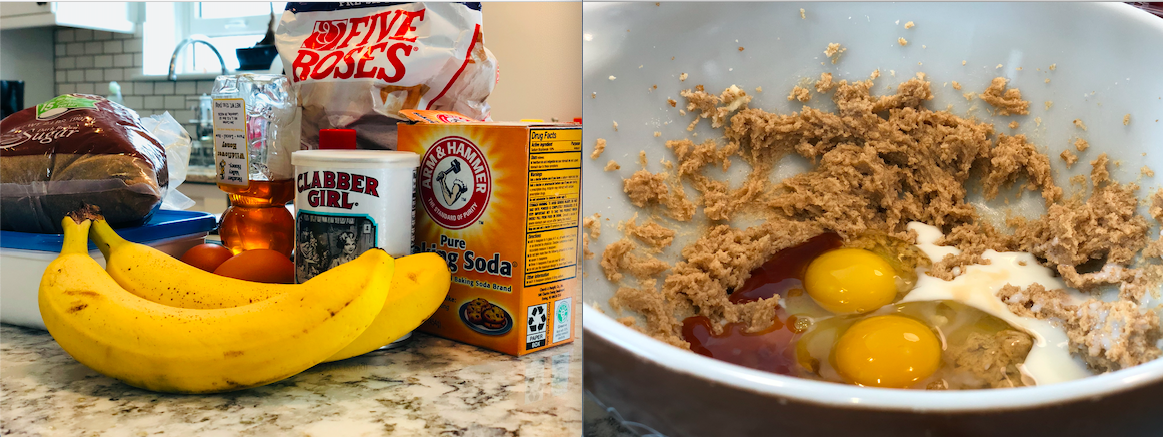
- In a separate bowl, mix together the flour, baking powder, and baking soda. Add one-third of the flour mixture into the wet mixture and beat until just combined. Then add one banana to the mixture and beat until the banana has become mushy and combined into the mixture. Alternate between adding the rest of the flour mixture, one third at a time, and the rest of the bananas, one at a time. Beat until just combined after each addition.
- When it has all fully combined, mix in the honey. At this point, you can mix further to eliminated lumps of banana if you’d like a smooth cake.
- Pour the batter into the prepared loaf pan. Bake for 60-70 minutes, or until a toothpick or knife inserted into the center comes out clean.
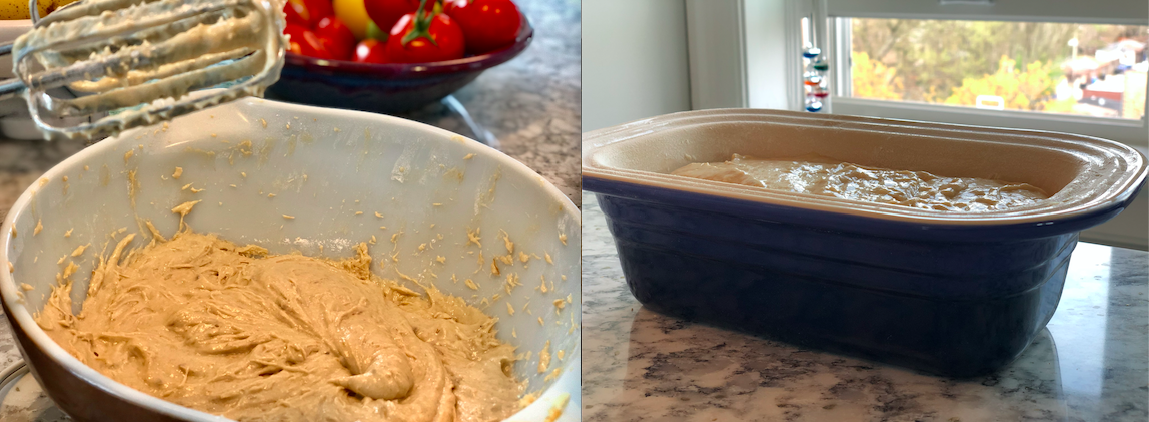
- Cool in the pan for 10 minutes, and then move it to a wire rack to allow the bread to finish cooling. Try to wait another 20 minutes before cutting into it, but I understand how difficult that can be.
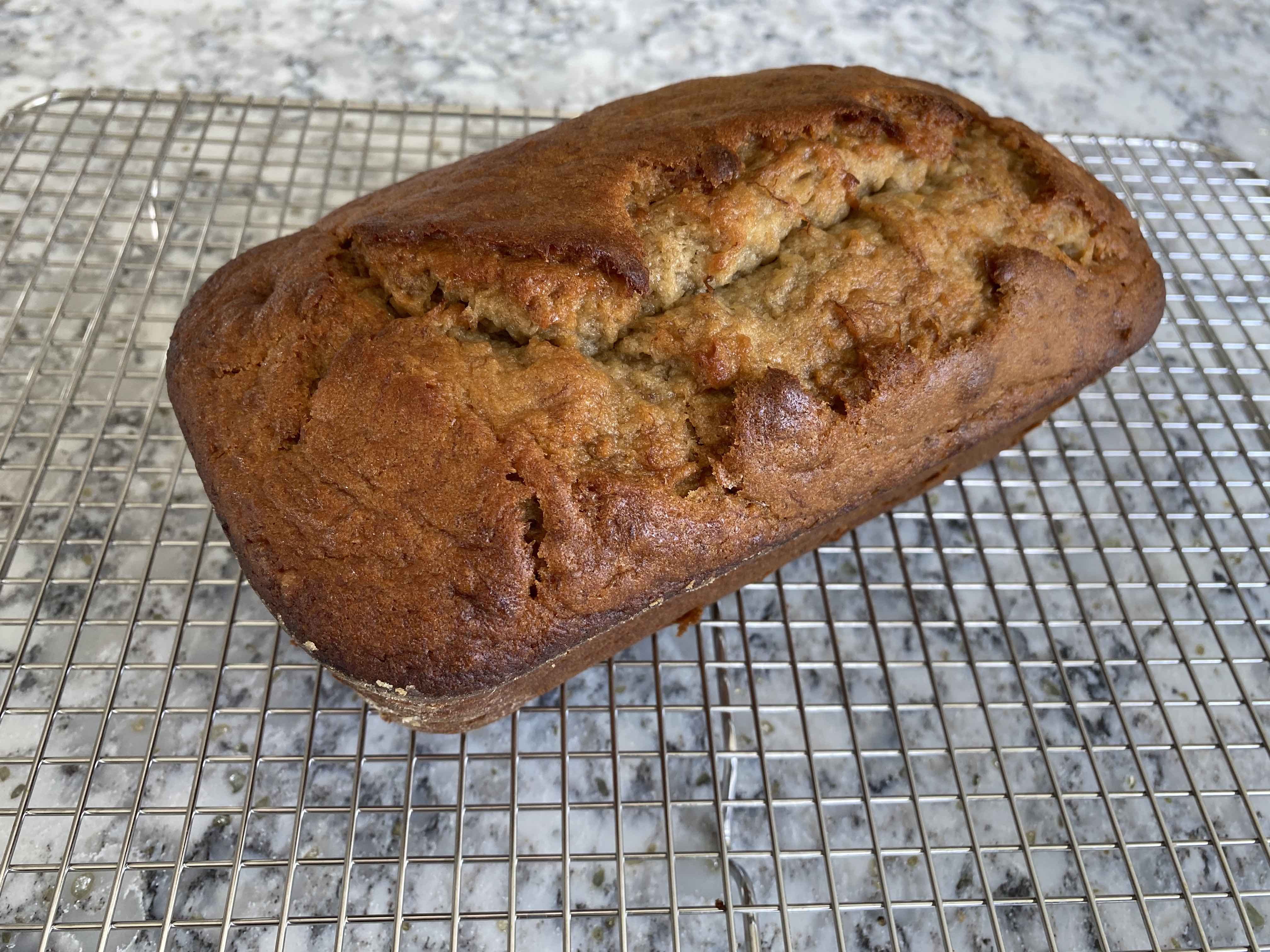
Notes
- Sometimes if I have bananas that are about to go bad, I put them in the freezer. If you suddenly need banana bread, you can just use the frozen bananas (with the juice that can seep out of them).


